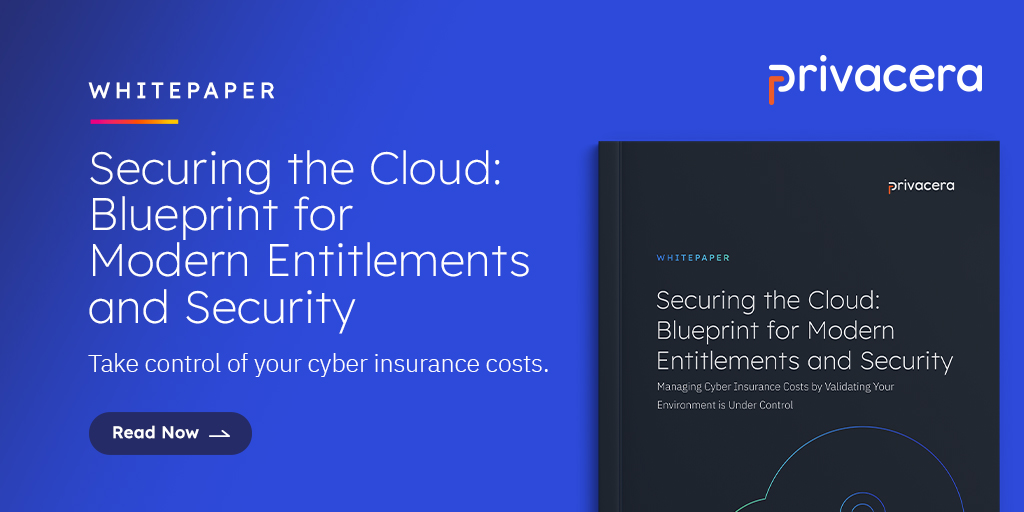In an era where artificial intelligence (AI) innovations permeate almost every facet of our lives, the concept of governance has never been more critical. As we stand at the crossroads of AI expansion, a new and specific subfield has emerged: Generative AI Governance. But what exactly is it? How is it distinct from traditional AI governance? And most importantly, why is it essential for the future? Before diving into governance, let’s understand the generative aspect of AI.
What is Generative AI?
Generative AI models are a subclass of machine learning models that can produce new content. They have the ability to “generate” outputs, such as images, music, or even text, that did not exist before.
The majority of the initial wave of generative AI was focused on marketing content creation. Now, enterprises are integrating generative AI into more business processes such as self-service business intelligence (BI) and customer service.
What is Generative AI Governance?
Generative AI (GenAI) Governance, at its core, concerns the practices, policies, and principles guiding the development, deployment, and monitoring of generative AI systems. It’s about creating a framework to ensure these models are used responsibly and ethically while maximizing their potential benefits and minimizing risks. Read our blog “What is AI Governance & Why Does It Matter for Your Business?” to learn more about what Generative AI Governance is and why it matters for your organization.
Why is Generative AI Governance Different?
While all AI systems require some form of oversight, generative models pose unique challenges:
1. Unpredictable Outputs: Since these models can create novel content, there’s an inherent unpredictability in their results. A text generation model, for example, might produce misleading information or biased perspectives.
2. Potential for Misuse: Generative tools can be used maliciously, such as creating deepfakes or generating false narratives.
3. Ethical Dilemmas: There’s a thin line between creation and imitation. If a generative model produces a piece of art or music, who owns it? The developer? The user? The AI?
Recognizing these unique challenges, it becomes clear that conventional AI governance models might not be entirely adequate.
Best Practices in Generative AI Governance
The dynamic nature of generative AI demands a robust and adaptive governance framework. Here are the foundational pillars:
1. Transparency: The algorithms, data, and methodologies used in generative models should be open for scrutiny. Understanding how decisions are made can foster trust among users and stakeholders.
2. Accountability: Developers and users of generative AI systems should be accountable for the outputs. This requires clear guidelines on usage and the consequences of misuse.
3. Ethical Usage: There should be a commitment to avoid harm. This includes avoiding the generation of harmful or misleading content and respecting intellectual property rights.
4. Continuous Monitoring: Given the unpredictable nature of generative outputs, ongoing monitoring is essential. Feedback loops should be established to catch and rectify any unforeseen biases or misrepresentations.
5. Stakeholder Involvement: To ensure a holistic approach to generative ai governance, all stakeholders, including ethicists, end-users, and the general public, should have a say in governance policies.
Read our blog “Generative AI Governance Best Practices” to learn more about the Best Practices in Generative AI Governance.
The Role of Regulation in Generative AI Governance
While internal governance is essential, there’s a growing demand for external regulations. Governments and international bodies are beginning to recognize the potential risks associated with unchecked generative AI. The release of ChatGPT in the wild in November 2022 caught many off guard but it proved pivotal to shine a spotlight on the risks associated with GenAI and forced governments and regulators into action.
While existing consumer protection regulations like GDPR, CCPA and others apply equally to this new world of generative AI, newer concerns around bias, ethics, copyright protection, fairness, and transparency are bringing new regulations to the front. The European Union again led the way with the EU AI Act that was published in June 2023. The US followed with the Executive Order For Safe, Secure, and Trustworthy development and Use of AI in October 2023. Numerous other countries have subsequently followed suit with some form of regulation. An interesting attribute of the majority is the balancing of risk or trust with innovation and continued development of this technology.
In addition, standards bodies like NIST have been working with industry participants and established their AI Risk Management Framework with associated resources and training. What is particularly powerful with the NIST AI RMF is that it covers the essential aspects of people, processes and technology considerations and can form a very practical roadmap for implementing governance and guardrails for your generative AI journey.
Challenges Ahead
While the foundational principles are clear, their practical implementation is rife with challenges:
1. Balancing Innovation and Control: Over-regulation might stifle innovation. Striking the right balance is crucial to ensure that the potential of generative AI is harnessed without significant negative consequences.
2. Global Consistency: AI doesn’t recognize borders. A patchwork of varying international regulations might create confusion and hinder global cooperation.
3. Adaptive Frameworks: The rapid evolution of AI means that governance models should be equally dynamic, requiring frequent revisions and updates.
Generative AI Governance for Compliance, Privacy, and Security
Generative AI governance is a complex task, particularly when it intersects with compliance, privacy, and security. Here is a detailed roadmap to govern GenAI, ensuring it aligns with these core pillars:
1. Define Clear Objectives and Boundaries:
- Purpose Specification: Clearly define what the Generative AI system is designed to achieve and ensure that its purpose aligns with ethical and legal standards.
- Boundary Setting: Set clear limitations for the GenAI’s operations to prevent misuse or outputs that might breach compliance, privacy, or security standards.
2. Create a Compliance Framework:
- Regulatory Compliance: Be informed of existing regulations that pertain to AI in your region and sector. For instance, in healthcare, Generative AI must comply with regulations like HIPAA.
- Internal Policies: Develop internal policies that go beyond the legal minimum, covering ethical considerations and best practices.
- Audits: Conduct regular audits of GenAI systems to ensure they operate within compliance boundaries. Non-compliances should trigger immediate remediation actions.
3. Embed Privacy by Design:
- Data Minimization: Only use the minimum amount of data necessary to train and operate the Generative AI system.
- Anonymization: Use techniques to anonymize data, ensuring that generated content doesn’t accidentally disclose private information.
- Consent Management: Ensure that the data used for training and operation has been obtained with clear, informed consent from the subjects.
- Transparency: Offer users a clear view of what data is being collected and how it’s being used.
4. Prioritize Security:
- Secure Development: Incorporate security practices into the AI development lifecycle. Regularly check for vulnerabilities in the software and update as needed.
- Access Controls: Implement strict access controls for the Generative AI system. Only authorized personnel should have access, and user roles should be defined clearly.
- Monitoring & Detection: Constantly monitor the GenAI system for anomalous behaviors that could indicate security breaches or vulnerabilities.
- Data Encryption: Ensure that data, both in transit and at rest, is encrypted to prevent unauthorized access.
5. Implement Ethical Considerations:
- Bias Assessment: Regularly assess the Generative AI system for biases, ensuring that it doesn’t perpetuate or exacerbate unfair or discriminatory behaviors.
- Fair Use: Ensure that the system respects intellectual property rights and doesn’t infringe upon the creative rights of others.
6. Foster Accountability and Responsibility:
- Traceability: Maintain detailed logs of the GenAI system’s operations, allowing for traceability in case of any issues.
- Responsibility Assignment: Assign clear roles and responsibilities for the operation, maintenance, and oversight of the GenAI system.
7. Engage Stakeholders:
- Feedback Mechanisms: Implement mechanisms for users and other stakeholders to provide feedback on the Generative AI system.
- Reporting: Offer clear avenues for internal and external stakeholders to report concerns or potential breaches in compliance, privacy, or security.
8. Ensure Continuous Training and Education:
- Regular Updates: The field of AI is rapidly evolving. Ensure that those governing and operating the Generative AI system are continuously trained on new advancements and potential risks.
- Ethical Training: Incorporate ethical considerations into training programs to ensure that all personnel recognize the importance of operating the GenAI system responsibly.
Read our blog “AI and Privacy: Why AI Governance Is Essential for Your Business” to learn more about Generative AI Governance for Compliance, Privacy, and Security for your organization.
Deploying Security and Safety Guardrails For Your GenAI Apps
As organizations move from experimentation with GenAI to productionizing use cases and applications, it is important to consider scaling this new technology for enterprise use. A key consideration will be to establish standard architectural frameworks that holistically define security and safety guardrails versus attempting to embed guardrails at the LLM itself. While that is useful in a single use case it will lead to inconsistencies and a lack of observability across your entire AI estate. In most cases, we observe enterprises start with a single use case to bed down the reference architecture and then keep building on that for their next and future use cases.
Read our blog “How to Securely Accelerate AI Adoption” to learn more about the process of deploying GenAI Governance into your organization.
GenAI Early Adopter Industries
An early adopter market for GenAI is life sciences and pharmaceutical organizations, focusing on applying GenAI to patient interaction data from drug trials. This application aims to streamline analysis, enhance researcher efficiency, and provide faster access to critical information. GenAI’s capability to synthesize conclusions from raw data democratizes data use, but the challenge is managing sensitive data securely. Privacera’s AI Governance solution addresses these concerns, enabling secure data transfer and access control, particularly into vector databases. This ensures data integrity and confidentiality, allowing safe GenAI deployment in drug research while maintaining strict data governance standards.
Read our blog “Innovating Pharma and Life Sciences With GenAI Safely” to learn more about an early adopter of PAIG.
Unlock the Potential of Generative AI with Privacera AI Governance (PAIG)
Governing Generative AI for compliance, privacy, and security requires a holistic approach that blends technical safeguards with ethical considerations. As the technology evolves, continuous reassessment and adaptation of generative ai governance strategies will be crucial. With the right practices in place, organizations can harness the power of GenAI while ensuring that they respect user rights and societal norms.
Generative AI Governance isn’t just a technical necessity; it’s a moral imperative. As we empower machines to create, we must also ensure they do so responsibly. By integrating robust governance frameworks and fostering international collaboration, we can navigate the intricate landscape of generative AI, ensuring it serves humanity’s best interests. The future of generative AI is not just about what machines can create, but also about how we guide their creative journey.
Get our whitepaper on Privacera AI Governance (PAIG) and explore more about our solutions on the Privacera AI Governance product page.





